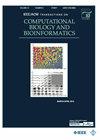增量 RPN:用于自然环境中苹果叶病检测的分层区域建议网络
IF 3.4
3区 生物学
Q2 BIOCHEMICAL RESEARCH METHODS
IEEE/ACM Transactions on Computational Biology and Bioinformatics
Pub Date : 2024-09-26
DOI:10.1109/TCBB.2024.3469178
引用次数: 0
摘要
苹果叶片病害会严重影响苹果的产量和质量,准确检测苹果叶片病害可以提高病害监测的效率。由于自然生长环境复杂,苹果叶片病害很容易与背景噪声混淆,导致检测效果不佳。本研究提出了一种级联递增区域建议网络(Inc-RPN),用于准确检测自然环境中的苹果叶片病害。所提出的 Inc-RPN 采用双层 RPN 架构,其中前导 RPN 用于生成病叶建议,后继 RPN 侧重于根据病叶建议提取目标病斑。在后继 RPN 中,设计了一个底层特征聚合模块,以充分利用桥接特征并保留目标病斑的语义信息。此外,还利用增量模块提取聚合的病叶特征和目标病斑特征。最后,设计了一个新颖的位置锚点生成器,根据病叶建议生成锚点。实验结果表明,所提出的 Inc-RPN 在 FALD_CED 和苹果叶病数据集上表现出色,表明它能准确地执行苹果叶病检测任务。本文章由计算机程序翻译,如有差异,请以英文原文为准。
Incremental RPN: Hierarchical Region Proposal Network for Apple Leaf Disease Detection in Natural Environments
Apple leaf diseases can seriously affect apple production and quality, and accurately detecting them can improve the efficiency of disease monitoring. Owing to the complex natural growth environment, apple leaf lesions may be easily confused with background noise, leading to poor performance. In this study, a cascaded Incremental Region Proposal Network (Inc-RPN) is proposed to accurately detect apple leaf diseases in natural environments. The proposed Inc-RPN has a two-layer RPN architecture, where the precursor RPN is leveraged to generate diseased leaf proposals, and the successor RPN focuses on extracting target disease spots based on diseased leaf proposals. In the successor RPN, a low-level feature aggregation module is designed to fully utilize the bridged features and preserve the semantic information of the target disease spots. An incremental module is also leveraged to extract aggregated diseased leaf features and target disease spot features. Finally, a novel position anchor generator is designed to generate anchors based on diseased leaf proposals. The experimental results show that the proposed Inc-RPN performs very well on the FALD_CED and Apple Leaf Disease datasets, showing that it can accurately perform apple leaf disease detection tasks.
求助全文
通过发布文献求助,成功后即可免费获取论文全文。
去求助
来源期刊
CiteScore
7.50
自引率
6.70%
发文量
479
审稿时长
3 months
期刊介绍:
IEEE/ACM Transactions on Computational Biology and Bioinformatics emphasizes the algorithmic, mathematical, statistical and computational methods that are central in bioinformatics and computational biology; the development and testing of effective computer programs in bioinformatics; the development of biological databases; and important biological results that are obtained from the use of these methods, programs and databases; the emerging field of Systems Biology, where many forms of data are used to create a computer-based model of a complex biological system

 求助内容:
求助内容: 应助结果提醒方式:
应助结果提醒方式:


